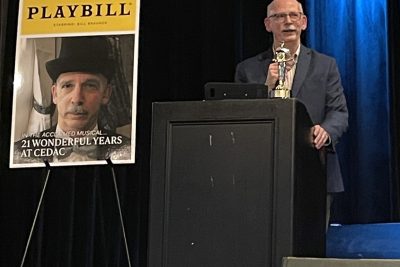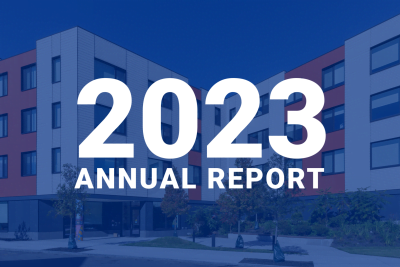While it makes good planning sense to promote transit-oriented development (TOD) housing, there is also a need to ensure that the very households who most benefit from public transportation can afford to live in locations where it is easily accessible, that is, equitable transit-oriented development, or eTOD. Recently, the growing demand for TOD housing has been driving up property values near transit, making eTOD housing scarce. This market dynamic can contribute to the displacement of lower income residents in key transit locations.
The Dukakis Center for Urban & Regional Policy at Northeastern University has researched the financial benefits of public transportation compared to reliance on personal vehicle ownership and found that for the typical American households, transportation costs are the second-largest expense after housing costs. For example, AAA’s 2017 report on the average cost of operating a medium sedan car nationally in 2017 was $8,171. While car ownership may not consume a significant portion of a wealthy household’s income, it can be financially unsustainable for lower income residents. Access to transit also opens up employment opportunities, further compounding its benefits. These factors raise concerns about equity in regards to access to public transportation.
Due to the high cost of car ownership, lower income households are more likely to use public transportation when it is accessible. In contrast, wealthier residents have more transportation options and may not choose to use transit even when it’s nearby. The health of our public transportation systems depends on high levels of ridership, and thus eTOD provides the double benefit of reducing travel costs for people who really need it, and ensuring there are enough transit consumers.
Fairmount Commuter Line
Recently, CEDAC has been excited to provide financial and technical assistance to several eTOD projects along the Fairmount commuter line. Near the Talbot Avenue station stop, Codman Square NDC is developing Talbot Commons. The project, which will be completed in two phases, will create 82 affordable rental apartments and transform the surrounding area. The first phase includes the preservation of 18 existing units and the production of 22 more on New England and Mallard Avenues and Norfolk Terrace and the second phase will create 42 rental units and 9,000 square feet of commercial space. CEDAC has supported both phases of the project, having committed $873,500 to date in predevelopment financing.
Just a few stops south, the eTOD project known as The Residences at Fairmount Station, is being developed through a partnership between Southwest Boston CDC and Traggorth Companies. CEDAC was an early supporter of this affordable housing development, committing nearly $1.3 million in acquisition and predevelopment financing starting as far back as 2012, and providing technical assistance to facilitate the developer partnership. In July, 2017, the partnership celebrated the construction start of The Residences at Fairmount Station which will create 27 affordable rental homes on five formerly vacant commercial properties adjacent to the MBTA’s Fairmount Avenue transit station.
In 2016, CEDAC entered into a participation agreement to support this Fairmount project with LISC Boston’s Equitable Transit-Oriented Development Accelerator Fund (ETODAF). The ETODAF provides an additional layer of streamlined financing to support eTOD projects. CEDAC’s partnership with LISC was also used to supplement our support of two other eTOD projects: Codman Square NDC’s Orlando-Waldeck development, and Harborlight Community Partners’ Granite Street Crossing project; the latter of which recently presented an award to neighbors for their open-minded support for new affordable housing in their Rockport neighborhood. We highlighted a number of these projects in a joint opinion piece in CommonWealth Magazine – “Transit equity has a housing component”.
A third eTOD/Fairmount Line project worth noting is Cote Village. The proposed project, which is being developed by Caribbean Integration Community Development in partnership with the Planning Office of Urban Affairs, will be located on a parcel of land that abuts the site of the future Blue Hill Avenue station stop on the Fairmount Line. The station is expected to open in spring 2019. Cote Village will create 76 units of mixed-income family housing and 2,000 square feet of commercial space. CEDAC recently committed $400,000 in predevelopment financing for the development of this project.
Planning Ahead
The expansion of transit lines typically take years of planning. While planning is underway, property values often start to escalate along the envisioned transit corridor. It is important to secure development sites for eTOD while opportunities exist.
Somerville Community Corporation’s (SCC) Union Square Apartments at 181 Washington Street is a great example of proactive eTOD. With the MBTA Green Line Extension project that will bring service beyond Lechmere Station to Union Square in Somerville and College Avenue in Medford, SCC developed a key transit-oriented site just a few blocks from the anticipated Green Line stop in Union Square. The property includes 35 affordable residential units and 2,400 square feet of commercial space on the ground level. CEDAC committed key early support for this initiative by providing $2.5 million in predevelopment and acquisition financing.
But the Green Line Extension isn’t the only project in the works. As the planning to expand and improve transit continues, we look forward to continuing to support the future initiatives of our non-profit community partners to ensure the development of eTOD housing. It’s important to remember that access to transit is an essential component of maintaining diverse communities that offer economic opportunities for all residents.






